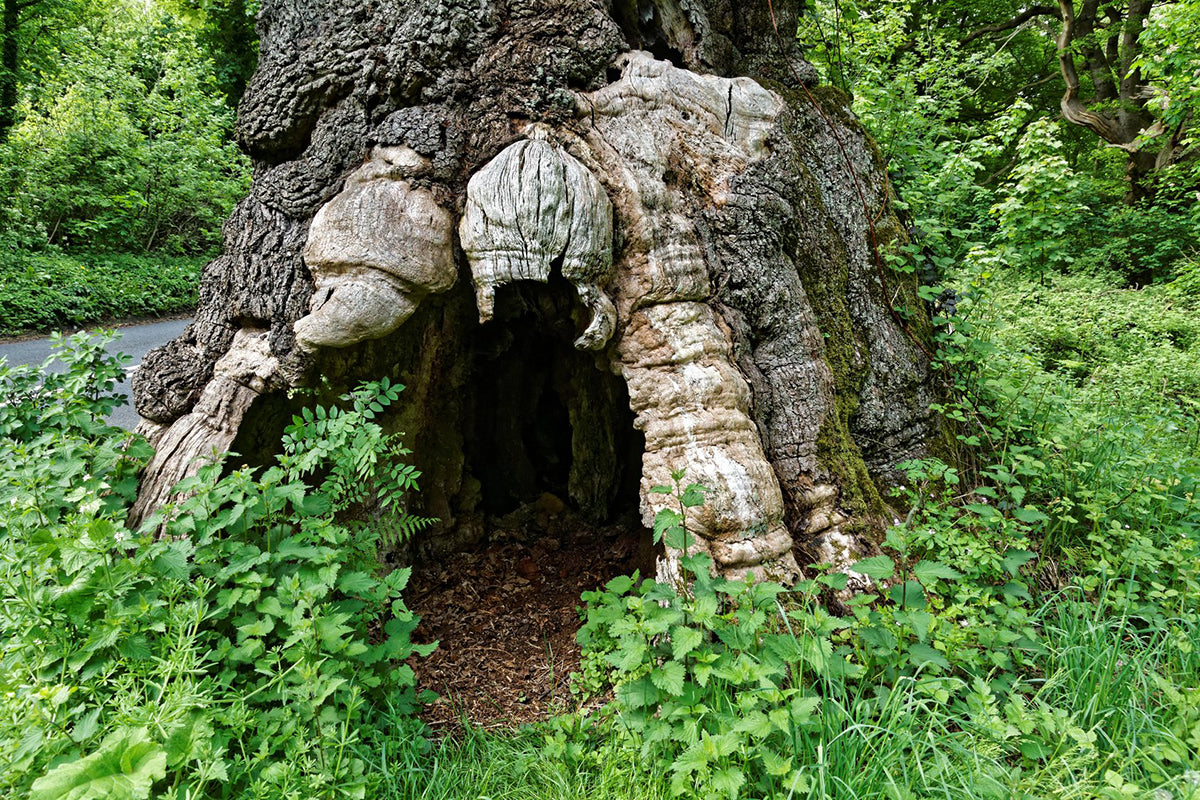Exceptional trees - Savernake Forest's Big Belly Oak

Located in Wiltshire’s Savernake Forest, The Big Belly Oak, a millennium-old giant, really is a living witness to English history. This sessile oak, Quercus petraea, was named among 50 Great British Trees as part of Queen Elizabeth’s Golden Jubilee celebrations in 2002. Boasting an impressive 11.18-meter girth, its hollow centre, likely the result of pollarding centuries ago, adds to its character. In 2002 Big belly was measured for a supportive girdle. Special steel bands and threaded rod braces were fitted to its main trunk to prevent splitting.
Growing directly alongside the A346 road where it is easily spotted, this ancient tree was a sapling when William the Conqueror defeated King Harold in 1066. It is part of a remarkable collection of veteran oaks in Savernake, including the Queen Oak and the King of Limbs. Some have not fared as well as old Big Belly however. The Crockmere Oak, a youngster in comparison at 500 years of age, was found to have fallen at the start of 2024. A result of wet ground and storms.
Savernake Forest itself is over 1,000 years old, and was first mentioned in a Saxon Charter by King Athelstan in 934 AD under the name Safernoc. It predates the New Forest, planted by the Normans a century later. After the Battle of Hastings in 1066, Savernake was entrusted to Richard Esturmy, a knight, and has since been passed down through 31 generations without ever being sold. In the 1530s, King Henry VIII stayed at Savernake, marrying Jane Seymour, whose family owned the forest. In the 1740s, Lord Thomas Bruce commissioned Capability Brown to create beech avenues, including Britain’s longest, the Grand Avenue, at 4.2 miles.







